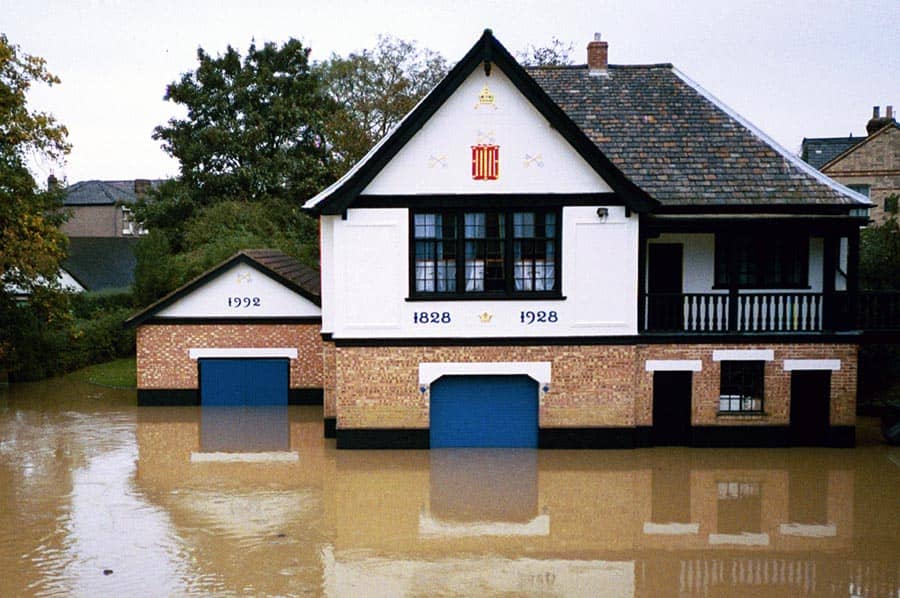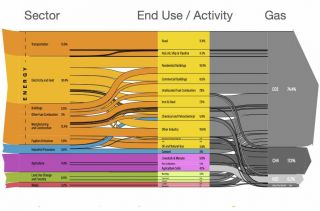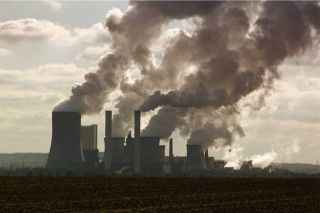
www.buildingsandcities.org/insights/commentaries/cop26-linkages.html
At COP-26, Climate Change Should Not Go Solo

By Ilan Kelman (University College London, UK)
Climate change is not separate from other built environment challenges. To be positively impactful and effective, COP-26 needs to take on board the connections between climate change and other topics. This will ensure effective climate change action for our infrastructure.
The built environment experiences multiple challenges simultaneously. Air pollution and salt in oceanside air can corrode. Insects and rodents infiltrate rooms and the spaces between them. Environmental changes can damage or destroy structures, including through flood, drought, wind, fire, subsidence, heave, hail, rain, snow, ice, heat, and humidity.
Human-caused climate change brings impacts too, few of which are unique to climate change. When examining specific environmental impacts on specific infrastructure, climate change affects the parameters over decades, but does not impose much different to the past.
For instance, the built environment in locations with temperatures a small amount below freezing might be severely affected by freeze-thaw damage. Climate change's rising average air temperature combined with expectations of more temperature fluctuations could push these areas from steady periods of below-freezing and above-freezing to more transitions between these ranges.
When moisture infiltrates cracks in buildings or roads and then freezes, it expands, damaging the infrastructure. The more freeze-thaw cycles, usually the more damage. Similarly, above-ground power lines frequently suffer when precipitation around the freezing mark results in ice accumulating on, and the weight snapping, cables and towers. More storms around this temperature mean more ice storms rather than just snow or just rain. These concerns do not emerge from climate change, but they are exacerbated by it.
Burying power lines does not necessarily help. Underground power lines have been knocked out in heat waves which are becoming more intense, more frequent, and longer lasting due to human-caused climate change. Plus, people revert to air conditioning and fans, boosting electricity use. Again, this is nothing new, but is made worse due to climate change.
Meanwhile, many storms and floods are becoming more intense, but less frequent from climate change. Irrespective, infrastructure needs to deal with wind and water. With many buildings sited in floodplains without disaster damage mitigation measures, the core issue is vulnerable development and lack of risk reduction. Climate change alters floodplains, expanding many, but has little impact on the baseline of inadequate codes, regulations, monitoring, and enforcement-especially considering how much flood damage occurs outside of identified floodplains.
Many places around the world successfully construct buildings to deal with weather. Strong roofs properly tied to walls will stay on during hurricanes. Flood-resistant materials and finishes permit occupancy soon after floodwater drains. Vegetation management around a fire-resistant property helps to avoid a structure igniting during a wildfire/bushfire.
If such techniques were always implemented to reduce disaster damage, then climate change altering the weather would have limited impact. Focusing on disaster damage mitigation would, by definition, embrace built environment adaptation.
Otherwise, isolating climate change measures could create disaster. Imagine that we construct an energy-efficient, off-grid school out of the expanding floodplain and capable of dealing with any weather. We have not helped much if it collapses in the next earthquake. Similarly, a zero- or negative-emissions building is commendable, yet goes only partway to being "clean" if it has problems with asbestos or formaldehyde.
Some exceptions do bring comparatively new built environment challenges from climate change. Of notable and immediate concern is excessive heat and humidity. Natural ventilation can do only so much to keep buildings habitable during expected heat waves, especially when the air temperature does not cool down much at night. For human survival, artificial indoor cooling will be necessary which, in turn, taxes the energy supply. With few viable adaptation options, these devastatingly lethal heat waves are avoided by stopping climate change.
As such, climate change adaptation provides little new, with other fields proffering generations of expertise, such as on disaster risk reduction, vulnerability reduction, pollution prevention, and resilient infrastructure. COP-26 has no need to re-invent what we know already and have implemented for millennia, with varying levels of success.
Success cannot be augmented by divorcing one environmental influencer, namely human-caused climate change, from wider endeavours regarding disasters, development, health, and sustainability. Instead, COP-26 could highlight the connections, placing climate change adaptation within other built environment processes while tackling climate change as a springboard toward an overall much safer built environment over the long-term.
Latest Peer-Reviewed Journal Content
A living lab approach to co-designing climate adaptation strategies
M K Barati & S Bankaru-Swamy
Mediation roles and ecologies within resilience-focused urban living labs
N Antaki, D Petrescu, M Schalk, E Brandao, D Calciu & V Marin
Negotiating expertise in Nepal’s post-earthquake disaster reconstruction
K Rankin, M Suji, B Pandey, J Baniya, D V Hirslund, B Limbu, N Rawal & S Shneiderman
Designing for pro-environmental behaviour change: the aspiration–reality gap
J Simpson & J Uttley
Lifetimes of demolished buildings in US and European cities
J Berglund-Brown, I Dobie, J Hewitt, C De Wolf & J Ochsendorf
Expanding the framework of urban living labs using grassroots methods
T Ahmed, I Delsante & L Migliavacca
Youth engagement in urban living labs: tools, methods and pedagogies
N Charalambous, C Panayi, C Mady, T Augustinčić & D Berc
Co-creating urban transformation: a stakeholder analysis for Germany’s heat transition
P Heger, C Bieber, M Hendawy & A Shooshtari
Placemaking living lab: creating resilient social and spatial infrastructures
M Dodd, N Madabhushi & R Lees
Church pipe organs: historical tuning records as indoor environmental evidence
B Bingley, A Knight & Y Xing
A framework for 1.5°C-aligned GHG budgets in architecture
G Betti, I Spaar, D Bachmann, A Jerosch-Herold, E Kühner, R Yang, K Avhad & S Sinning
Net zero retrofit of the building stock [editorial]
D Godoy-Shimizu & P Steadman
Co-learning in living labs: nurturing civic agency and resilience
A Belfield
The importance of multi-roles and code-switching in living labs
H Noller & A Tarik
Researchers’ shifting roles in living labs for knowledge co-production
C-C Dobre & G Faldi
Increasing civic resilience in urban living labs: city authorities’ roles
E Alatalo, M Laine & M Kyrönviita
Co-curation as civic practice in community engagement
Z Li, M Sunikka-Blank, R Purohit & F Samuel
Preserving buildings: emission reductions from circular economy strategies in Austria
N Alaux, V Kulmer, J Vogel & A Passer
Urban living labs: relationality between institutions and local circularity
P Palo, M Adelfio, J Lundin & E Brandão
Living labs: epistemic modelling, temporariness and land value
J Clossick, T Khonsari & U Steven
Co-creating interventions to prevent mosquito-borne disease transmission in hospitals
O Sloan Wood, E Lupenza, D M Agnello, J B Knudsen, M Msellem, K L Schiøler & F Saleh
Circularity at the neighbourhood scale: co-creative living lab lessons
J Honsa, A Versele, T Van de Kerckhove & C Piccardo
Positive energy districts and energy communities: how living labs create value
E Malakhatka, O Shafqat, A Sandoff & L Thuvander
Built environment governance and professionalism: the end of laissez-faire (again)
S Foxell
Co-creating justice in housing energy transitions through energy living labs
D Ricci, C Leiwakabessy, S van Wieringen, P de Koning & T Konstantinou
HVAC characterisation of existing Canadian buildings for decarbonisation retrofit identification
J Adebisi & J J McArthur
Simulation and the building performance gap [editorial]
M Donn
Developing criteria for effective building-sector commitments in nationally determined contributions
P Graham, K McFarlane & M Taheri
Join Our Community

The most important part of any journal is our people – readers, authors, reviewers, editorial board members and editors. You are cordially invited to join our community by joining our mailing list. We send out occasional emails about the journal – calls for papers, special issues, events and more.
We will not share your email with third parties. Read more



Latest Commentaries
COP30 Report
Matti Kuittinen (Aalto University) reflects on his experience of attending the 2025 UN Conference of the Parties in Belém, Brazil. The roadmaps and commitments failed to deliver the objectives of the 2025 Paris Agreement. However, 2 countries - Japan and Senegal - announced they are creating roadmaps to decarbonise their buildings. An international group of government ministers put housing on the agenda - specifying the need for reduced carbon and energy use along with affordability, quality and climate resilience.
Building-Related Research: New Context, New Challenges
Raymond J. Cole (University of British Columbia) reflects on the key challenges raised in the 34 commissioned essays for Buildings & Cities 5th anniversary. Not only are key research issues identified, but the consequences of changing contexts for conducting research and tailoring its influence on society are highlighted as key areas of action.